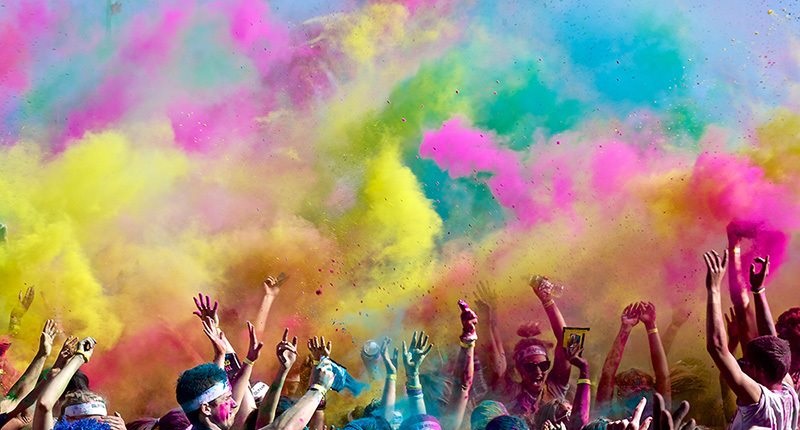Colour runs: the trendiest way to whitewash Indian culture
Many cultures and religions greet the arrival of spring in various ways. Hindu people celebrate Holi, the festival of colours. Although many might not know about Holi, they may partake in similar rituals and events, seeing that its central activity has been commercialized in recent years with popular marathons and events like Colour Me Rad. These events are an example of how commercialization manifests as cultural appropriation. To fully understand this phenomena, historical context needs to be provided.
Holi is a part of the Hindu religion; it takes place over two days and celebrates fertility, love, colour, and good overpowering evil. The Hindu diaspora observes Holi throughout the world, but it is mainly celebrated in India and Nepal. What many do not know is that Holi is split into two parts: Holika Dahan and Rangwali Holi. Holika Dahan takes place the night before Rangwali Holi and involves burning dung and wood, symbolizing good defeating evil, and paying homage to a Hindu scripture. The next day, Rangwali Holi is celebrated, and the masses gather in public places to throw coloured powders and water at each other.
Although rooted in religion, the celebration is rather secular, drawing upon several mythologies. For Hindus, Holi is seen more as time to get together with friends and family to have a good time. It can be seen as a time for people from all castes, communities, and ethnicities to come together and enjoy each other’s company without discrimination. With this in mind, if a non-Hindu participates in Holi or a similar event that pays homage to the religion and culture, it should not be considered cultural appropriation.
The problem lies in white-washing, as many colour runs do not acknowledge the full origins of the tradition. India, Hinduism, and Holi are often not mentioned, and if they are, they are overly simplified. Because of this, people are unable to truly grasp the significance of this tradition. Furthermore, the exclusion of Holi’s origins makes it appear as if colour runs are a new Western invention, emphasized through the trademarking of such events. To add insult to injury, the Indian culture in this instance is being used to turn a profit.
Colour runs are indeed a form of cultural appropriation. For one, they do not pay respect to the religion and culture from which they originate. Organizations have trademarked the popular annual events to profit from them, and because of this, people are not able to celebrate Holi the proper way. Celebrating in a real or authentic Holi setting is fine—this method allows for cultural exchange, letting Hindu people celebrate the new season while introducing this part of their culture to others on their own terms, rather than from a white-washed perspective.
Photo courtesy of Resene


Many people run in the color runs that are not “white.” So, why do you say, “The problem lies in white-washing, as many colour runs do not acknowledge the full origins of the tradition.”
Also, there is no single “Hindu religion.”
If people of India engage in holidays or activities unique to “whites” is that considered “brown washing?”
Cultural syncretism has been happening for thousands of years.
Please stop the race attacks.
Love all.
Thank you for sharing your opinion, and critique
If you would like to expand on your thoughts about race in a future article,
feel free to contribute in our first issue in september
As an Indian person I truly appreciate the time taken to write this article. I think the color run is fun and wonderful however the lack of acknowledgement and whitewashing is disheartening
Could we not say this about Christmas or Easter as well. And no less so. Totally ‘whitewashed’ by commercialism which includes bunnies eggs & men in red suits. Little respect (ie appreciation) is given to the reason for the season there either…especially since it’s identified by specific public holidays specifying the meaning (at Easter at least). The way of the now secular world we live in 🤷🏻♀️